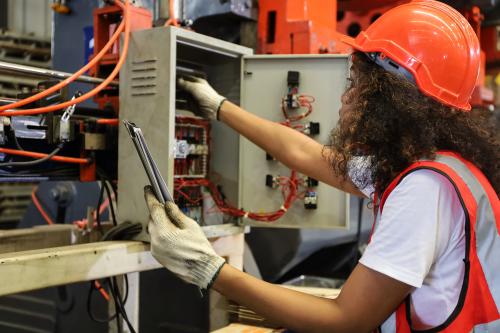When it comes to transformative infrastructure, there’s no bigger tool for metro areas than local referendums. These regional votes give metropolitan areas an opportunity to sidestep the business-as-usual approach in Washington and initiate their own local vision—and to do so with resources typically counted in the billions. From major rail investments in Denver to a new central park in Oklahoma City, referendums are a vital way to reshape our metropolitan economies.
And that’s exactly what makes yesterday’s vote in Atlanta so troubling for that region’s future. Presented with the opportunity to levy a 1 cent sales tax increase—and infuse the region with roughly $7.2 billion in new revenues—Atlanta’s residents made a clear statement: We’re not ready to pay more for better infrastructure.
So this begs a natural follow-up question: what does Atlanta want to do about its transportation challenges?
Here’s a quick refresher on the state of play in Atlanta. Over the course of four decades, the metro area grew by over 6,700 square miles and added over 4 million people. That outward expansion put extreme stresses on the area’s transportation network. Based on the Inrix Traffic Scorecard, Atlanta is the 21st most congested metro area in the country. According to our internal analysis, Atlanta’s transit system ranks dead last among the country’s ten largest metropolitan areas when it comes to connecting people with jobs.
The TIA-2012 vote was an excellent opportunity to smooth Atlanta’s commutes, better connect employment centers with neighborhoods, and even redevelop underused property. Instead, Atlanta chose to stand still.
Besides missing out on major new projects, the voters’ rejection poses some other problems in the immediate term. Without the extra revenues, Atlanta’s leadership will have difficultly leveraging newly expanded TIFIA funds from the federal government. Instead, they will cede the advantage to other metros with referendums on the books. Advantage: Los Angeles, Phoenix, and Oklahoma City.
Just as importantly, the region’s transportation bill still rose this morning—but with no new projects to show for it. According to our own reading of Georgia’s Transportation Investment Act of 2010, any district with a ‘no’ vote would cause their local responsibility for state transportation maintenance and improvement grants to rise from 10 percent to 30 percent. That’s right, Tea Party activists: you’re still paying more.
Now, Atlanta’s business and residential leaders need to wait at least two years for a follow-up vote. And while the national record is strong for referendums passing on follow-up tries, Atlanta’s 63 percent rejection suggests TIA supporters have quite a bit of work to do. Those supporters can start with an information campaign; Atlanta’s regional residents need to know more about the costs of inaction, and how investments in one locality can benefit residents and businesses of the whole region.
In the meantime, other states and regions can learn from Atlanta’s example. As fiscal constraints persist, we expect that more and more states and metro areas will look to ballot measures as a way to secure targeted, ring-fenced investments in infrastructure, innovation capacity, and human capital. The lesson of Atlanta: Communicating with voters is everything. Since voters who are uncertain of a measure’s effects tend to vote no, raising awareness about the benefits of a ballot measure is crucial for a win at the ballot box.
So it’s back to the drawing-board for those working to address Atlanta’s transportation challenges. We just hope Atlanta’s next proposal leads to action, instead of today’s decision to do nothing.


Commentary
What’s Next for Transportation in Atlanta
August 1, 2012